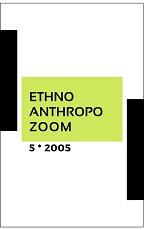NA ZDRAVJE! THE CULTURAL ROLE OF RAKIA IN MACEDONIA
NA ZDRAVJE! THE CULTURAL ROLE OF RAKIA IN MACEDONIA
Author(s): Karolina Bielenin-LenczowskaSubject(s): Anthropology
Published by: Институт за етнологија и антропологија, Универзиетет »Св. Кирил и Методиј«
Summary/Abstract: In this article I tried to portray the significance of rakia in the Balkan culture, both traditional and contemporary, in town as well as in the countryside, for elders and for the youngsters. I conducted my field studies predominantly among orthodox Macedonians, however after further literary studies, I tried to project my conclusions onto a wider, overall Balkan range. Whilst analyzing particular aspects of these cultures, I noticed that rakia takes part in many important or even most important moments of life of an individual and a community. It is more than a mere element of feasts; it has a significant symbolic facet – as it is used in magical practices ensuring luck or successful human relations (drinking rakia during wedding receptions). The grape rakia, metonymically linked with wine, is employed in religious practices, including those involving contact with the dead. Furthermore, like wine, rakia has certain apotropaic uses, ensuring people safety. It is a chiefly ‘male’ beverage (it is them who drink and distil it in most cases, as well as row the grapes), nonetheless the women as well play some part in its drinking and production. In certain circumstances even Muslims drink rakia, even though the Koran forbids them to drink alcohol. Many functions of rakia have been transferred into town culture, sometimes directly - by the people who moved from the countryside to town, bringing their habits with them. Hence, in towns rakia is traditionally bought at the market, rather than at a supermarket, so it is homemade. Additionally, rakia is associated with many town celebrations which depict a certain event as characteristic for a given place. The use of rakia in the aforementioned celebrations – and the key part it plays in the “rakiadas” or the Kavardarci carnival – is a sign of its relation with the culture and tradition of the given towns and provinces. In the era of global culture, is has become one of the Balkans’ trademarks, an element of their ‘market identity’, and a tourist attraction. In contrast to the equally popular wine, rakia is one of the distinctive features of the Balkan region, and basing upon this very distinctiveness it helps create a special ‘Balkan’ identity.
Journal: EthnoAnthropoZoom / ЕтноАнтропоЗум
- Issue Year: 2005
- Issue No: 5
- Page Range: 142-169
- Page Count: 27
- Language: English

